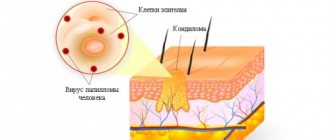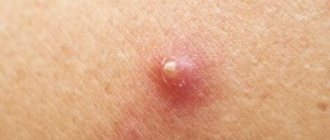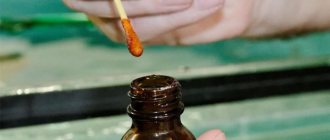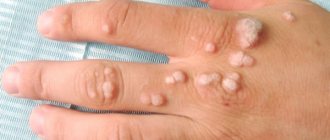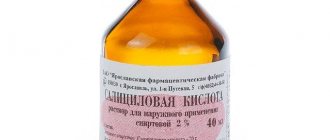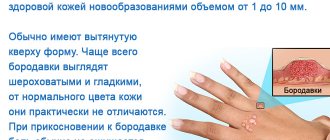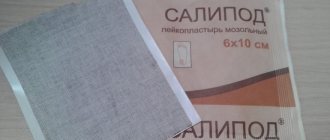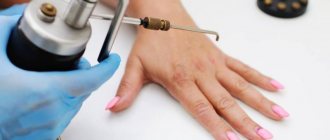What is a wart?
Warts are benign formations on the skin or mucous membranes that are a manifestation of the papilloma virus.
This infection is common to most people, the degree of manifestation depends on individual physiological characteristics. Usually papillomas do not cause discomfort unless they are painful. 1) Reduced immunity.
2) Hormonal changes.
The incubation period can range from several weeks to 2-3 years. To investigate a specific subtype of the virus, you should donate blood for analysis or conduct a cytological examination.
Types of warts
Warts are called benign neoplasms. They are caused by HPV - human papillomavirus. Almost every person has warts. Neoplasms can be easily transmitted through objects or direct contact. Sometimes a wart does not make itself felt for a long period.
A woman may have a tumor (and not know about it) even before pregnancy. And during this period, hormonal changes in the body begin, and immunity decreases. All this stimulates the manifestation of hidden warts during pregnancy.
Features of treatment
In order to get rid of warts, women often use over-the-counter products , a variety of which are available in almost any pharmacy.
During pregnancy, you should still refrain from using them without the permission of the supervising doctor.
at which a woman decides to get rid of a wart is of great importance
Thus, doctors often advise refraining from active treatment or removal of warts in the first trimester of pregnancy .
If the neoplasm needs to be treated or removed before childbirth, then this is done in the second and third trimester .
Some medications, the use of which may be dangerous for the child in the first trimester, will not harm him during treatment in the third or second trimester of pregnancy. An example in this case is oxolinic ointment .
Today, the following procedures help achieve good results in the treatment of warts:
- cryotherapy;
- laser removal;
- surgical removal.
Cryotherapy involves using liquid nitrogen to freeze skin growths.
Is it possible to remove warts during pregnancy using this method? After all, doctors have not yet formed a consensus on the use of this procedure during pregnancy.
For this reason, pregnant women should agree to cryotherapy with great caution; it is better to find a safe alternative.
Laser wart removal is an effective method, but it may take several treatments to completely remove unwanted warts.
Surgical removal of papillomas is usually performed using a scalpel. The disadvantages of this method include the presence of unpleasant sensations and the possibility of unpleasant consequences in the form of uneven skin in the areas where the tubercles are localized.
Warts - program “About the Most Important Thing”
What else can be done to remove a wart? Some women try to resort to traditional medicine recipes to treat papillomas on the body during pregnancy. In this case, you should definitely consult a doctor first.
You cannot use recipes that are based on toxic substances of any origin, because this can harm the baby!
Causes of warts
During pregnancy, the body experiences stress: the functioning of all systems is restructured. This is the main reason for the awakening of a dormant virus.
Dermatologists call the following leading factors for the appearance of warts in expectant mothers:
- changes in hormonal levels. An increase in progesterone levels softens the epithelium and makes the skin more sensitive;
- exacerbation of chronic ailments due to toxicosis and decreased immunity. Most often, the formation of warts is caused by diseases of the gastrointestinal tract (gastritis, cholecystitis);
- weight gain causing damage to skin connective tissue (stretch marks);
- uncomfortable clothes.
The main reason why warts appear during pregnancy is a virus in the body. The infection appears due to a weakened immune system and hormonal changes that occur during the period when a woman is expecting a child. At this time, skin formations grow greatly.
Consequences of removing warts with liquid nitrogen
Modern ways to get rid of warts
Have you been fighting PAPILLOMAS for many years without success?
Head of the Institute: “You will be amazed at how easy it is to get rid of papillomas by taking every day...
Read more "
The body of a completely healthy person is able to fight back any virus, including HPV, which contributes to the appearance of various types of warts on the body.
But if a person’s immune system is weakened, then single growths suddenly begin to appear on the skin, some of them increase in size and grow.
Photo:
In this case, traditional medicine offers to get rid of pathological formations on the skin using various medications and surgical methods.
The list of effective medications against warts includes:
- “Super celandine” - the contents of the product are in no way related to the plant called celandine. The drug is a strong concentrated solution of alkalis;
- “Verrukacid” is an aggressive composition, therefore it has serious contraindications and is used with caution;
- “Cryopharma” – freezes growths at a temperature of -1960C;
- “Solcoderm” - due to the acids contained in the composition, the drug has a cauterizing and mummifying effect on the growth.
You should not use these medications without consulting a dermatologist. After the procedure of exposure of active substances to the growth, unexpected consequences may occur, for example, burns of nearby tissues.
In addition, without determining the causes of papillomas, it is dangerous to carry out such procedures.
You can safely remove growths in a medical center by choosing one of the modern technologies:
- removal of papillomas with laser – sessions are effective, painless and safe;
- exposure of the growth to electric high-frequency current, the operation is performed under local anesthesia, the neoplasm is cut off with a thin metal loop;
- removal of pathology with liquid nitrogen - the growth is destroyed under the influence of high temperatures.
Considering patient reviews, we can conclude that each of these technologies is effective in its own way.
But the main thing is that after using the mentioned methods, there are no weeping wounds and scars left on the body for life, as could have been the case earlier, after a surgical operation with a scalpel.
Video:
Today, warts are removed in this way only in specific cases, of which there are few. All clinics use modern equipment and innovative technologies.
As reviews from dermatologists show, technology that allows for the removal of warts with liquid nitrogen is currently in high demand among patients who want to get rid of pathological growths.
How is build-up removed with liquid nitrogen?
Removal of warts with nitrogen or a cryodestruction session is performed by freezing the growths (see photo).
The operation can be performed using several methods:
- a wooden applicator is used, which is a stick with a soft tip. It is moistened with nitrogen, then applied to the wart for 10 - 30 seconds;
- papillomas are treated with a freezing spray;
- the procedure is performed using a special cryogenic apparatus equipped with nozzles of various diameters.
Photo:
In any case, the procedure for removing warts with liquid nitrogen should be performed in several stages:
- First, the affected skin is cleaned with antiseptics, which helps prevent infection from entering the operated area. If you are going to remove growths on your face with liquid nitrogen, you must remove cosmetics from the skin before freezing;
- At the second stage, the papilloma is treated with a cream that quickly softens its superficial stratum corneum. This is necessary to speed up the freezing of the pathology;
- When performing freezing with a cryogenic apparatus, a tip with a nozzle of a suitable diameter is directed at the wart. The tip is connected to a special container containing freezing liquid. The substance is applied to the wart under slight pressure for 5 – 15 seconds;
- If a spray is used to remove pathological growths on the skin, then it is simply sprayed onto the wart. If during the procedure the growth is treated with an applicator, then it is moistened in a freezing liquid and, pressing lightly, is applied to the wart. In this case, the freezing time of the growths can range from 10 to 40 seconds;
- Under the influence of liquid nitrogen, the wart thickens, becomes hard and acquires a white tint;
- At the end of the session, the growth is treated with a special substance that removes unpleasant sensations.
As numerous patient reviews show, during the process of freezing a wart, you can feel a slight tingling and burning sensation in the treated area. In this case, anesthesia is not used, since the sensation of pain is mild, and the wart removal sessions are short-lived.
Video:
After the procedure is completed, swelling and redness appear almost immediately around the growth, and after a while an epidermal blister appears, filled with a specific liquid. The bubble cannot be punctured. All you need to do with it is treat it with a solution of potassium permanganate.
In about a week, the blister will dry out, after which it will disappear painlessly. Instead of a bubble, a brown crust will remain on the skin, which will also disappear on its own after two weeks.
As a result of removing the wart with liquid nitrogen, a pink spot will remain in its place, which also soon disappears.
Treatment of plantar and flat warts
Only a wart that appears on the foot does not bother its owner until its roots settle deep in the tissues.
A folk recipe will get rid of papillomas. Take the simplest...
This is what our grandmothers did. The warts will go away in 10 days. Just take...
Then, when walking, the growth is pressed in, which causes unbearable pain. Most often, pathological formations form on the foot at the base of the toes, on the balls of the feet and on the heel.
Plantar warts can grow on the feet of adults and on the feet of children.
Photo:
During the procedure for removing plantar warts with liquid nitrogen, the patient feels pain, which is explained by the longer freezing process and the use of greater pressure than when removing other types of pathologies.
In addition, after removing warts on the sole with liquid nitrogen, the patient requires care, because such an operation on the foot causes a person’s disability.
Typically, the patient begins to fully stand on his leg only after 2-3 weeks of recovery.
When getting rid of a pathological growth on the foot, treatment procedures should be carried out at least 3-4 times. Freezing sessions are performed every 4-5 days.
If the skin on the foot is in too advanced a state, treatment can last up to six months. After removal of plantar formations, significant indentations rarely remain at the surgical site.
As a rule, the specialist determines before the operation to what depth the skin should be treated, which prevents damage to healthy tissue and also makes it easier to care for the operated area.
Video:
The easiest way to remove flat growths on the skin. In this case, the specialist wets the applicator in liquid nitrogen, then uses it to intensively treat the wart until it turns pale.
After the procedure, the area treated with liquid nitrogen turns red, after 5–7 days it becomes overgrown with a hard dark crust, which then painlessly peels off along with the wart.
But all this time, while the wart dries out, the operated area of skin requires care. If, after treating the growth with liquid nitrogen, a blister appears in its place, then it is necessary to protect it from punctures and moisture.
According to patient reviews, if a blister appears on the foot, then it should be treated as often as possible with salicylic alcohol or a solution of potassium permanganate - this will dry it out faster. Treatment stops once the skin begins to peel off.
Advantages and disadvantages of using liquid nitrogen
The attending physician can only allow you to get rid of warts using liquid nitrogen after a procedure to ensure that the pathological growth is benign.
Indications for destroying warts by freezing are:
- constant injury to growths;
- discomfort;
- feeling of pain.
The main advantage of cryodestruction is considered to be the accuracy of the effect. The growth itself is exposed to nitrogen, while nearby healthy tissue remains untouched.
The advantages of using cryotherapy also include the short duration of sessions, the absence of the need for preparation before the procedure, bloodlessness and the ability to get quick results.
Photo:
In addition, treating affected areas of the skin with liquid nitrogen guarantees the absence of scars, and most importantly, prevents the spread of the virus to healthy areas of the skin.
An additional advantage of cryotherapy is the minimally invasive method and affordable cost.
As for the disadvantages of cryodestruction, they are significantly fewer than the advantages. This is the inability to accurately control the depth of penetration of the freezing substance, which subsequently causes repeated freezing sessions.
Another disadvantage is that after removing growths, a fairly long period of rehabilitation is required, especially for operations performed on the foot.
In addition, removed tissue from a pathological growth cannot be sent for histological analysis. It is for this reason that most often the patient has to choose another method of getting rid of warts.
Video:
Warts during pregnancy
During pregnancy, against the background of a decrease in general immunity, the papilloma virus may become more active. Warts can appear both on the skin and on the epithelial surfaces of the genital organs.
1) Hormonal changes
2) Changes in the skin due to the weight gain of a pregnant woman (warts on the soles of the feet)
3) Diabetes mellitus can be a consequence of hormonal changes.
Simple warts on the skin are not dangerous during the period of bearing a child; it is impossible to infect a child with a papilloma infection during feeding, if the growths are present on the chest.
According to doctors, the virus in its latent form is not a big threat to conceiving a child. Even if there are a few warts on the mother’s body, this is not dangerous. But, of course, it is advisable to undergo the necessary examinations.
Many people who are faced with the problem of papillomas ask: “Is it possible for pregnant women to remove warts?”
Doctors say that the issue of removing tumors in pregnant women should be treated with great attention. They advise to be sure to be examined before pregnancy. If this was not done, and the virus began to manifest itself sharply in the first months of pregnancy, but does not cause inconvenience, then removal of the formations should be postponed during pregnancy.
If the situation is critical and the papilloma virus needs to be treated, it is better to start therapy in the second or third trimester. This is the period when the child’s organs are already formed.
Removal can be done using the same methods using Creon, laser, traditional surgery, etc. For the removal of genital warts, the most acceptable procedure can be considered radio wave coagulation together with the treatment of epithelial tissues with antiseptics.
You should carefully consider the choice of antiviral drugs for pregnant women due to side effects and contraindications. In addition, medications that increase general immunity are allowed.
https://www.youtube.com/watch?v=Gu7eQgjzzD0
If the wart has grown to a large size and causes serious inconvenience to the expectant mother, it can be removed. Of course, everything happens on the direct recommendation of the doctor. A dermatologist will solve the problem; anesthesia is not required.
But if the papilloma is small, you should still wait until the end of pregnancy. After the birth of the baby, the young mother will forget about the problem, because the papillomas will disappear.
Pregnancy is a period in a woman’s life when significant changes occur in the functioning of many body systems. Throughout the entire period of gestation, warts may appear on the arms, legs and entire body of a pregnant woman. In this article we will talk about what it is, whether it can be dealt with and removed during pregnancy.
Get rid of parasites and PAPILLOMAS WILL DISAPPEAR
Causes and features of warts
If a woman develops genital warts during pregnancy, she should consult a gynecologist to resolve the issue of the method of removing the elements and the amount of treatment.
In what cases is it worth removing and treating condylomas during pregnancy?
- Multiple condylomas of the external genitalia and anal area.
- Localization of elements in the vagina and cervix.
A single wart located on the inner surface of the thighs or on the skin of the genital organs, away from the vestibule of the vagina, does not need to be removed. Such formations usually regress after childbirth.
Treatment of anogenital warts is carried out using medicinal and surgical methods permitted during pregnancy.
- Acids – Collomak, Duofilm. Local acid-based preparations cauterize the wart. Acids are used in the presence of elements of small size and quantity (total affected area no more than 5 cm). Removal must be carried out on an outpatient basis. Only a doctor can accurately apply the genital warts to the area.
- Immunomodulators (Viferon, Genferon, Cycloferon) are used for a large area of damage and for localization of formations on the cervix and vagina. Treatment is carried out after the 12th week of pregnancy.
- Doctors prescribe antiviral drugs (Panavir) for severe illness, as well as in combination with other diseases that suppress the immune system (HIV, hepatitis, tuberculosis, any chronic infections).
- Removing condylomas by physical means:
- Laser method.
- Cryodestruction.
Physical treatment is carried out without pain relief. There are no pain receptors on the cervix, so manipulation only brings discomfort.
After removal of formations in the vagina or cervix, the doctor must prescribe immunomodulators. During manipulations to remove warts, the virus spreads to healthy tissue, so it is necessary to prevent their regrowth with medications.
In order to protect yourself and your child from the dangers of HPV, every pregnant woman needs:
- Plan a pregnancy. The doctor will prescribe an examination for all infections, including viral ones. Often, various types of virus persist in the genital tract of women, both high-risk carcinogenesis - causing dysplasia and cancer, and low-risk - initiating the growth of condylomas. Therefore, prescribed antiviral and immunomodulatory treatment before conception will avoid the growth of warts with decreased immunity. In addition, during examination, the doctor will differentiate benign neoplasms of the skin of the genital organs and will advise their removal.
- If genital warts do appear during pregnancy, they need to be treated and removed. The drugs and methods used are safe for the fetus.
- After pregnancy, you should visit your doctor regularly. The specialist will notice changes in the skin and cervix in time.
- It is worth protecting yourself from hospital-acquired infection. Before the upcoming gynecological examination, you need to purchase disposable kits at the pharmacy, including a gynecological speculum, sterile gloves and a diaper, a Volkmann spoon and a cytobrush. You should not be embarrassed to remind the doctor to wash and treat your hands with antiseptic if he did not do so before the examination.
By following the recommendations of a gynecologist, a pregnant woman will protect her child from the dangers of the human papillomavirus. At the initial stages of growth of condylomas, modern treatment methods can completely prevent the effect of the infectious agent on the health of the mother and fetus.
Skin growths on the body do not affect the course of pregnancy and do not harm the health of the unborn baby. Plantar warts cause discomfort. There is a risk of accidentally damaging the growth.
During pregnancy, any interference in the vital functions of the systems of a weakened body is undesirable. Particular caution should be exercised in the first and third trimesters.
If the wart does not cause discomfort or interfere with normal delivery, it is better to postpone the cosmetic procedure until the baby is born.
important: You cannot remove warts yourself. Unprofessional actions can provoke the spread of the virus and an increase in the number of warts, as well as dangerous complications, including oncology.
- Medicines (including folk remedies) can cause allergic reactions. If a woman was not previously prone to such manifestations, during pregnancy the immune system becomes hypersensitive. An acquired allergy can be passed on to a child.
- Some procedures can cause premature labor. For example, cryotherapy, which is controversial among doctors.
- Surgical methods are stressful not only for the woman, but also for the fetus.
Only specialists will be able to correctly assess the balance of benefit and harm and determine safe methods.
Consultation with a dermatologist and gynecologist is required.
If there is a threat of warts growing, changing their color and size, doctors suggest removing the growths.
Treatment usually begins with taking immunostimulants. Based on the examination, the doctor prescribes antioxidants, vitamin complexes, products based on human interferon and other adaptation drugs.
In some cases, doctors allow surgical methods for removing common warts.
Electrocoagulation
The method involves destroying warts with various beams of a surgical laser:
- carbodioxide ray promotes rapid blood clotting, prevents further spread of the human papillomavirus;
- The erbium beam removes the tumor layer by layer by evaporation.
Laser surgery does not injure the skin and does not cause complications.
Usually performed using local anesthesia, which is undesirable for the fetus.
Cryodestruction or freezing
The method is based on removing warts with liquid nitrogen. The tissue affected by the virus is destroyed due to changes in the structure of the cell. The wound does not bleed and does not leave scars.
Restrictions in the use of surgical methods and medications force women to turn to traditional medicine.
It should be remembered: even the most harmless, at first glance, recipe can cause an acute reaction of the immune system. You should definitely consult a doctor.
importantThe general rule for all folk recipes is to act directly on the wart without affecting healthy skin.
To protect the undamaged area, you can use a children's hypoallergenic adhesive plaster. They apply it to the area around the wart.
Treatment of skin growths with retinol acetate (vitamin A) is considered the most gentle and safe. Daily lubrication effectively eliminates even deep papillomas.
Traditional recipes that have proven themselves to be quite good:
- soak a piece of cotton swab in apple cider vinegar and apply to the wart twice a day for 15–20 minutes;
- grate raw potatoes and apply the pulp to the tumor up to 5 times a day;
- cut the stem of the celandine (preferably in an ecologically clean area), moisten the wart with the yellow juice in the morning and evening;
- take a solution of hydrogen peroxide into a pipette and drop 1 drop onto the wart 2 times a day;
- At night, apply a bandage with the pulp of an aloe leaf or a crushed clove of garlic.
important When using folk remedies, it is necessary to monitor skin reactions. Redness, itching, and peeling are a signal to refuse the procedure. Do not use vinegar essence or other aggressive substances.
Warts do not look aesthetically pleasing, and many pregnant women want to get rid of them. Only a specialist can assess the correctness of such a decision and calculate the possible risk. Do not neglect consulting a dermatologist.
It is important to know that normalization of hormonal levels after the birth of a baby contributes to the disappearance of a significant part of warts.
A wart itself during pregnancy does not pose a danger to the mother and the unborn baby. But self-medication using folk methods can do a lot of harm. If the warts do not cause pain and do not grow, it is better not to touch them until the baby is born. Only genital warts that appear on the genitals require treatment.
Some tumors can grow so large that they create an obstacle to the birth of a child. When he leaves the mother's womb, the warts that appear on the birth canal rupture and burst. As a result, severe bleeding begins, and the baby can catch the virus.
How dangerous (and are they dangerous?) are warts during pregnancy?
It’s worth starting with the fact that warts pose virtually no danger .
At the same time, their presence is not always easy to cope with, because in some areas of the body they cause a lot of discomfort, and in some cases they are also depressing, if we talk about the aesthetic side of the issue.
Thus, the presence of papilloma on the face can greatly spoil the mood throughout pregnancy, and the appearance of neoplasms between the fingers and toes greatly interfere with leading an active lifestyle.
For the baby, all types of warts that appear on the mother’s body are safe, except those located on the birth canal. Most often in this case we are talking about genital warts.
Let's consider the options when wart removal is necessary :
- in case the baby may become infected during childbirth;
- if the size of the tumor and its location can negatively affect the birth process;
- if the number of papillomas increases rapidly and causes the mother a lot of worry and anxiety.
Is it possible to treat papillomas?
This option is possible when neoplasms appear intensively in the later stages, which can greatly complicate the birth process. If, after the examination, serious consequences are predicted, a special form of the papilloma virus is identified, in the most extreme case, termination of pregnancy and only subsequent therapy for the disease is possible.
An oncologist should participate in consultations with the patient; the board of doctors decides on a cesarean section or termination of pregnancy and subsequent treatment measures.
In some cases, patients say that warts go away on their own. Doctors attribute this to the fact that after childbirth, hormonal changes occur that affect changes in the general condition of a woman’s body. Immunity increases, the condition of the genital organs (in particular, the vagina and uterus) improves. Therefore the infection disappears.
Today, there is simply no method of treating HPV as such. Papillomas can be cured by medication only by 50, maximum 70%. But there can be no complete cure. That is, if warts disappear in one place, then after a few months they are likely to form in another.
There are physical, surgical and chemical methods for removing warts. But it is better to resolve this issue after childbirth, and only if it is still relevant.
Wart removal is performed by a qualified dermatologist. You should not do this yourself, or trust your health to dubious specialists. Before the procedure, the doctor must examine the patient and find out all possible contraindications to the operation. If necessary, additional examinations are carried out.
Bleeding and rapidly growing warts deserve special attention. Suspicion of a malignant tumor is a reason to visit an oncologist as soon as possible. After consultation with a doctor, a decision is made to remove the tumor.
The optimal time for treating warts is from 14 to 32 weeks of pregnancy. During this period, it is possible to use anesthesia with minimal risk to the growing fetus. At other times, warts are removed only according to strict indications.
Treatment options:
- Surgical removal. The procedure is performed under local anesthesia. The surgeon cuts the skin and removes the wart along with surrounding tissue. This method is used when a malignant tumor is suspected, when it is necessary to take tissue for analysis. Histological examination is carried out directly during surgery. Based on the results of the analysis, it is possible to expand the operation and remove all suspicious areas of skin in the affected area.
- Laser coagulation. The most common method for removing warts. The laser beam targets the formation and evaporates it from the surface of the skin. After this procedure there are no marks or scars left. It is impossible to take tissue for histological examination with laser coagulation. The procedure is used only for benign skin tumors.
- Cryodestruction. Removal of warts under the influence of low temperature is carried out under local anesthesia. Small formations are excised without anesthesia. The procedure lasts 1-2 minutes, during which the node is destroyed and pulled away from the surface of the skin. After cryodestruction, barely noticeable scars may remain. During pregnancy, this method is used quite rarely.
Removal of warts during pregnancy can be performed under local anesthesia. For expectant mothers, gentle medications are selected that do not affect the tone of the uterus and the development of the fetus. Small tumors can be removed at the request of the woman without the use of anesthesia.
Not all warts require immediate treatment. Some formations, increasing in size during pregnancy, return to their original state after childbirth. If the wart does not bother you, you should postpone its treatment until a more favorable period.
If a wart is a significant nuisance during pregnancy, it can be removed using traditional methods. For example, apply a compress of grated potatoes with peel to the tumor for six days. Celandine juice is good for dealing with warts. It lubricates the new growths until they disappear completely.
One of the effective remedies in the fight against warts is aloe. The new growth is strongly steamed and the pulp of the plant is applied to it. Then a gauze bandage is applied on top. The compress should be applied in the evening and left until the morning. Treatment lasts for ten days.
You can also use regular hydrogen peroxide. It is used to lubricate the wart for a week. Before using any of the traditional methods, it is necessary to test the skin for the presence of allergic reactions to the components of the therapy. In addition, before using any of the listed methods (including traditional ones) for removing warts, a pregnant woman should consult with an obstetrician.
Should a pregnant woman have warts removed?
Most doctors agree that if the warts do not cause too much discomfort and do not form again in significant quantities, then there is no need to touch them during pregnancy.
Removing warts during pregnancy becomes relevant in cases where they are in the birth canal or are really bothering the pregnant woman. For example, there are warts that constantly cling to clothing and become injured. Sometimes pregnancy reduces a woman’s immunity so much that warts begin to form in large quantities on the hands, face, and neck.
In these cases, it is necessary to resort to their removal, but many medications (even externally) cannot be used by pregnant women. Antiviral drugs also need to be used with great caution. Doctors usually advise to “be patient” until all the child’s organs are formed in order to minimize the harm from the use of various drugs. Thus, if a pregnant woman needs to remove warts, it is better to do this not in the early stages, but after 28 weeks.
